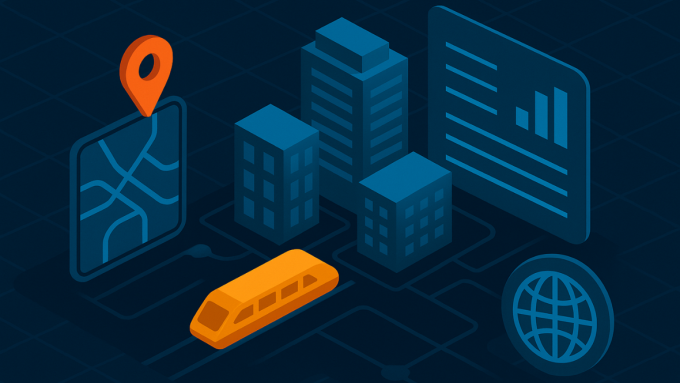The Department for Transport promotes key research on the economic benefits of digital twins for integrated transport network management
London, 11 November 2024: The Department for Transport (DfT) alongside a consortium led by global engineering consultancy Arup, and including the Digital Twin Hub, has published pioneering research on the economic benefits of digital twins for integrated transport network management.
The research builds on the DfT Transport Research Innovation Board (TRIB) vision and roadmap to facilitate development of a national ecosystem of federated digital twins to improve the performance of multi-modal transport in the UK by 2035.
The report, titled Integrated network management digital twin: economic benefits analysis, shows the potential impact of such transport digital twins across the economy, environment and to the public. The report estimates the overall benefits of using integrated network management digital twins to provide benefits of approximately c£850 million (of present value in 2010 prices) across a ten-year period.
The launch of this research is expected to enable the sector to make the case for integrated transport digital twins, drive adoption, and improve transport efficiency through collaboration by:
- Linking operations across modes, for example, surface transport, maritime and air traffic management: Connected digital twins can enable seamless integration of various transport modes, optimising journeys across sea, road networks, active travel, bus, tram and rail systems, and air traffic, and between geographical boundaries. This integration can lead to improved situational awareness, reduced journey times, congestion and emissions, and enhanced overall transport efficiency.
- Enabling better responses to incidents or emergencies and improved cross-government response in emergency situations: Digital twins offer the potential for a comprehensive, real-time view of the transport network, allowing for rapid identification of incidents and swift, coordinated responses. This capability enhances safety, minimises disruptions and enables more effective collaboration between government agencies and emergency services during crises.
- Improving access to data: To enable data sharing and cooperation with adjacent sectors such as Energy, and supporting the growth of innovations including AI.
Most of the benefits are expected to result from establishing integrated network management digital twins at large agglomerations and key corridors.
Aviation, Maritime and Security Minister, Mike Kane said: “As we move towards an era of integrated sustainable transport, digital twinning is a powerful technology that can help us transform our networks, improve efficiency and make greener travel a reality. This report is an excellent example of how Government and industry can come together to deliver innovation, and shows how valuable this technology could be to both the UK economy and the millions of people who rely on our transport networks every day.”
Ryan Hood, Digital Highways Leader at Arup said: “This research underscores the potential of digital twins to optimise the performance of our transport networks. By harnessing data and technology to support a collaborative, multi-modal approach, we can create a safer, more efficient, integrated, and sustainable transport system. This technology not only promises significant economic benefits but also paves the way for a more resilient, predictive, and responsive system that can adapt to the evolving needs of our society.”
The research report can be accessed through the Government website: https://www.gov.uk/government/publications/integrated-network-management-digital-twin-economic-benefits-analysis
The findings of the report formed a showcase event at Connected Places Catapult on Monday 11 November 2024. Look out for an event summary, coming soon.
About the TRIB Vision and Roadmap
The DfT’s Transport Research and Innovation Board (TRIB) brings together representatives from the key national transport research and innovation organisations and funders in the UK, as well as government departments with an interest in transport. It covers all modes of transport and includes stakeholders working from early stage to mature innovation and research.
The TRIB Vision and Roadmap was launched in June 2023. It is an essential tool for engagement and alignment around common strategic transport priorities:
- Providing an outline of the activities and building blocks to deliver the vision
- Enabling improved facilitation and coordination across TRIB member bodies and other broader stakeholders in future investment in digital twinning research and innovation, connected digital twins and cyber-physical infrastructure
- Enabling a socio-environmental and technical change in the transport sector.


Leave a comment